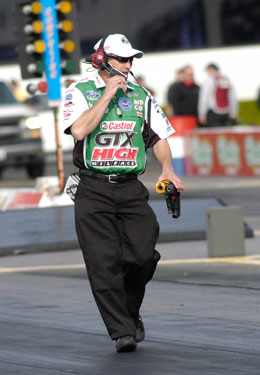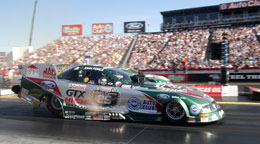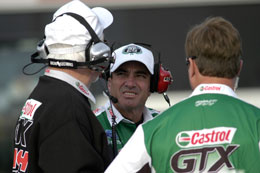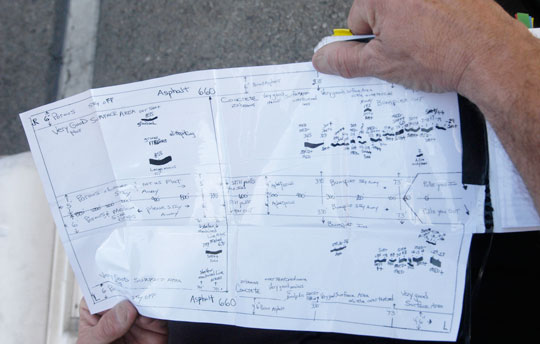Known as ‘The Track Whisperer’, Lanny Miglizzi started his career as a ‘grip specialist’ 29 years ago. “It was a kind of self defence. My dad ran a clutch business and racers complained that the clutch was inconsistent. When asked about the track conditions, they told us the track never changed all day. Sun and temperature will always change the track. So I went to the race track to collect information and to show them it was not the clutch that caused their problems. After a time I began collecting this track information for more drivers and wound up doing it it for at least 50 teams until Don Schumacher asked me to join him full-time in 2000.”

Grip is influenced by many factors and nowadays there are instruments that can express it in numbers. “The track-meter is one of them,” explains Lanny. “You put the rubber bottom on the track, pull the handle and it will show a number from 0 to 600. The higher that number, the better the grip. Very important is the track temperature, influenced by both air temperature and the direct heat of the sun. But 100 degrees here and today does not mean the same grip with 100 degrees tomorrow or on another track. That will also depend on the amount of rubber on the track. You can feel through your shoes how sticky the track is but the most important thing is my thumb. You have to touch the track! Other people walk down the track eight times a day; I touch the track a hundred times a day. The more you touch it, the more you learn and after 29 years I still learn every day. Collecting information begins even before NHRA starts preparing the track. I want to see how much old rubber they scrape off. With the new NHRA tyre-rotating machine the track is as good as after one day of sportsman qualifying.”

Before the first qualifying session, Lanny counts the number of cars that will run before one of ‘his’ cars hits the track. Fifty cars lay down more rubber than twenty. “During qualifying I go to the track at least every thirty minutes. Most important are the times the elimination rounds will be run on Sunday. With all this information I already know the track temperature when the air temperature is five degrees higher the next day. I’m always out in the open air to feel the sun in my face and see if clouds are coming in. There is a thin line between maximum grip and up-in-smoke. A damp spot, a little hole in the rubber on the track, small things can cause a tyre to lose traction.” That’s the reason Lanny always has old track rubber with him to fill small holes in the track.




